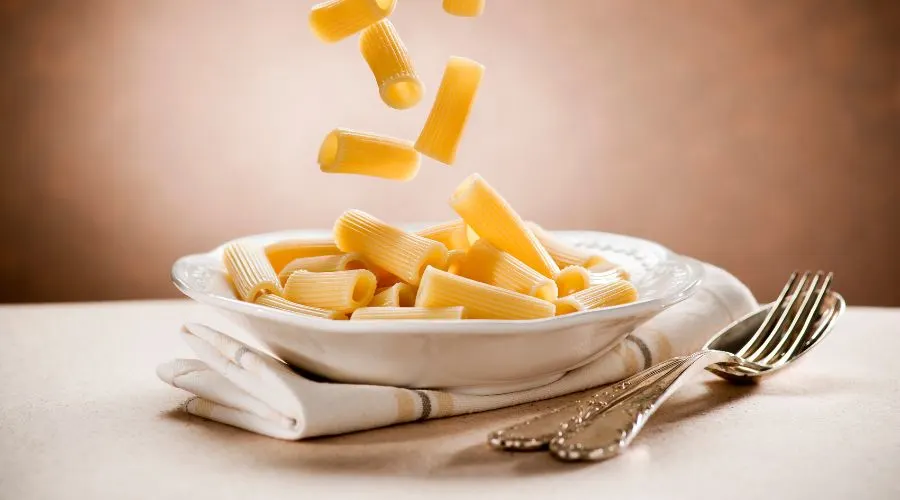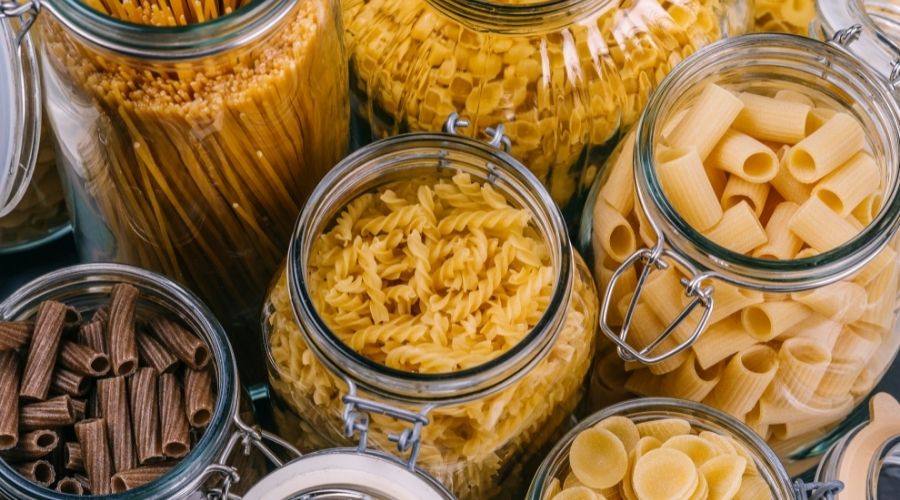Cooking pasta is a fundamental skill in both home and professional kitchens, yet determining the right amount of dry pasta to achieve the desired quantity of cooked pasta can sometimes be puzzling.
The dry-to-cooked pasta calculator is an essential tool for anyone looking to prepare pasta dishes with precision.
This article will delve into the specifics of converting dry pasta measurements to cooked pasta measurements, complete with tables for easy reference.
Understanding Pasta Expansion

Pasta absorbs water and expands during cooking, which means its weight and volume increase significantly. The type of pasta, its shape, and the cooking time all influence how much the pasta will expand.
Generally, pasta doubles in weight when cooked, but this can vary slightly depending on the factors mentioned.
Dry to Cooked Pasta Conversion Tables
The tables below are designed to help you convert dry pasta amounts to cooked pasta amounts for some of the most common pasta shapes.
These estimates assume the pasta is cooked al dente; cooking pasta beyond this point can lead to further expansion.
Table 1: Long Pasta (e.g., Spaghetti, Fettuccine, Linguine)
| Dry Pasta (ounces) | Dry Pasta (grams) | Cooked Pasta (cups) |
| 2 oz | 56 g | 1 cup |
| 4 oz | 112g | 2 cups |
| 8 oz | 224g | 4 cups |
| 16 oz | 448g | 8 cups |
Table 2: Short Pasta (e.g., Penne, Fusilli, Macaroni)
| Dry Pasta (ounces) | Dry Pasta (grams) | Cooked Pasta (cups) |
| 2 oz | 56 g | 1.25 cup |
| 4 oz | 112g | 2.5 cups |
| 8 oz | 224g | 5 cups |
| 16 oz | 448g | 10 cups |
Table 3: Shaped Pasta (e.g., Shells, Farfalle, Rotini)
| Dry Pasta (ounces) | Dry Pasta (grams) | Cooked Pasta (cups) |
| 2 oz | 56 g | 1.25-1.5 cup |
| 4 oz | 112g | 2.5-3 cups |
| 8 oz | 224g | 5-6 cups |
| 16 oz | 448g | 10-12 cups |
How to Use the Tables
1. Identify the Pasta Type: Determine the shape of the pasta you’re using, as this will affect the conversion ratio.
2. Measure the Dry Pasta: Use a kitchen scale for accuracy, measuring the amount of pasta you plan to cook in ounces or grams.
3. Consult the Table: Find the corresponding cooked pasta volume in cups. This is particularly useful for recipes that specify cooked pasta amounts or when planning portions.
Tips for Perfect Pasta Every Time

– Salt the Water: Always salt your pasta water generously; it’s the only chance to season the pasta itself.
– Avoid Overcooking: Pasta should be cooked to ‘al dente’—tender but still firm to the bite. Overcooking leads to mushy pasta and can affect the conversion accuracy.
– Reserve Pasta Water: Before draining, save a cup of the pasta cooking water. Its starch content is perfect for adjusting the consistency of your sauce.
Storing Cooked Pasta
If you have cooked more pasta than needed, it can be stored in the refrigerator for 3-5 days. Toss it with a little olive oil to prevent sticking, and reheat it gently, adding a splash of water to loosen it up.
Frequently Asked Questions
Can I use these tables for gluten-free pasta?
– Yes, but keep in mind that gluten-free pasta may have slightly different expansion rates. It’s always best to start with the manufacturer’s recommendations.
How do I measure long pasta without a scale?
– For spaghetti and similar long pasta, the diameter of a quarter-sized bundle of pasta is approximately one serving (2 oz dry).
Nutritional Information
Pasta is primarily a source of carbohydrates, with whole grain options offering more fiber and nutrients than refined versions.
On average, 2 ounces (56 grams) of dry pasta will yield about 200 calories, 7 grams of protein, less than 1 gram of fat, 42 grams of carbohydrates, and 3 grams of fiber when cooked without additional fats or sauces.
Understanding the dry-to-cooked pasta conversion is invaluable for accurate recipe following and portion control, ensuring that you prepare just the right amount of pasta for your needs, minimizing waste, and maintaining nutritional balance.
Whether you’re cooking for one or a crowd, these tables can help streamline the process, making meal prep more efficient and enjoyable.
Remember, the key to perfect pasta goes beyond just the amount. Paying attention to cooking times, water salinity, and sauce pairing can elevate a simple pasta dish into a memorable meal.
With this comprehensive guide to dry-to-cooked pasta conversions, including practical tables and essential tips, you’re well-equipped to tackle any pasta dish with confidence.
In summary, mastering the art of pasta conversion and preparation is a simple yet impactful way to enhance your culinary skills.
It allows for more precise cooking, better portion control, and ultimately, more delicious and satisfying meals. Keep this guide handy in your kitchen, and you’ll find that cooking pasta to perfection becomes second nature.

